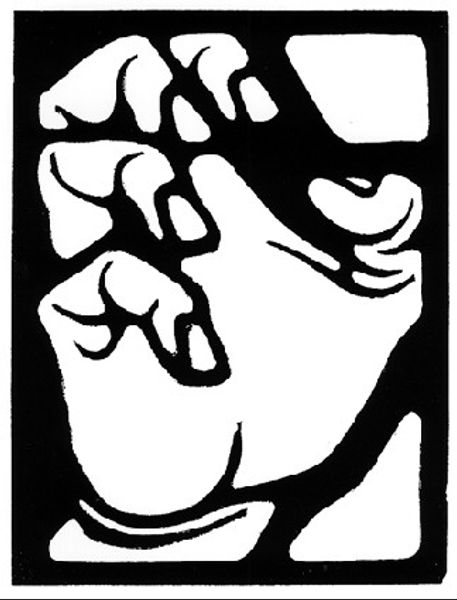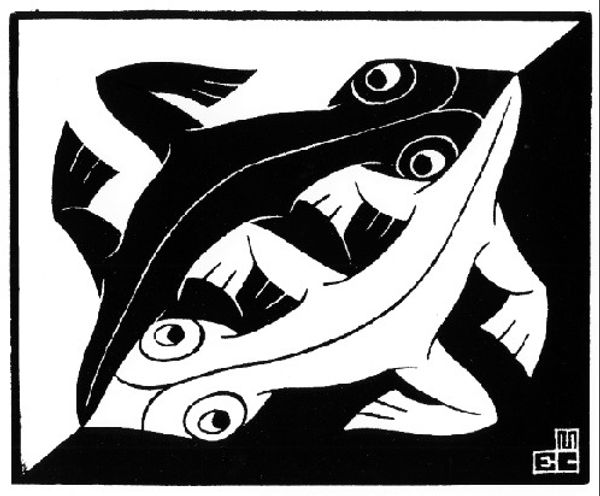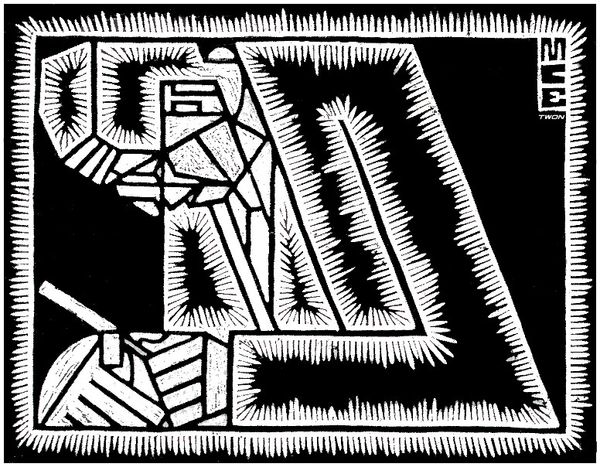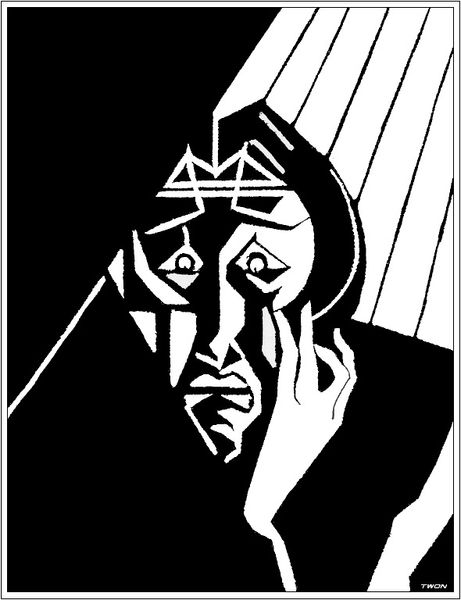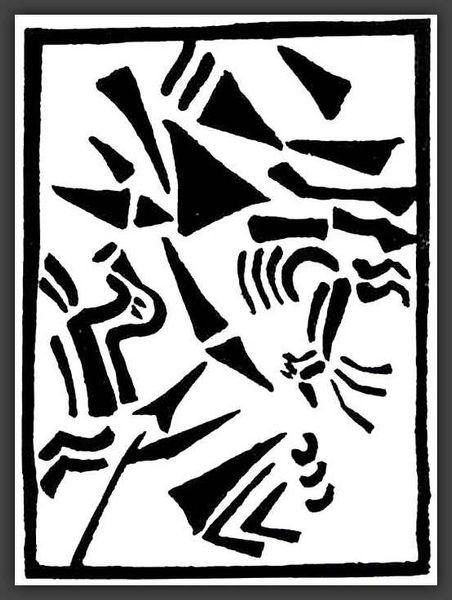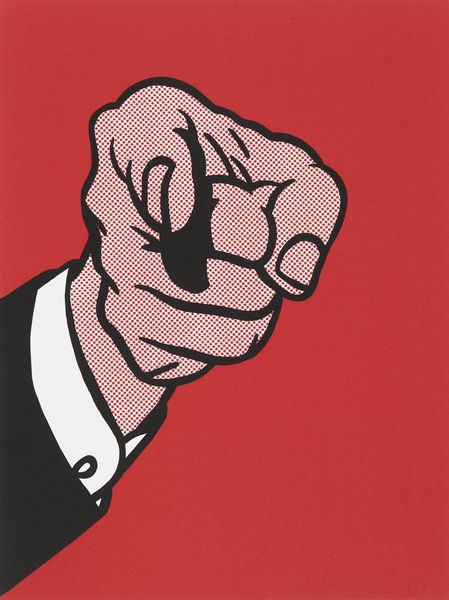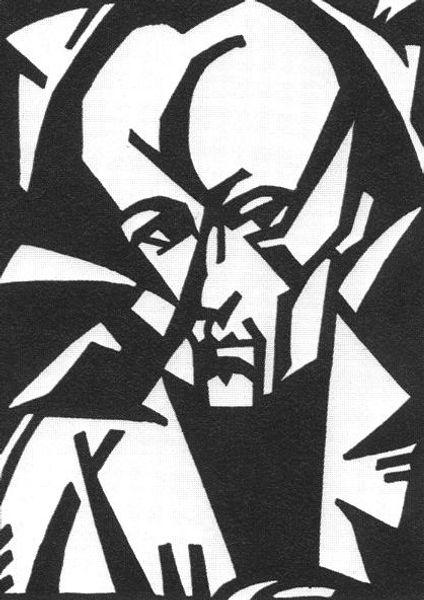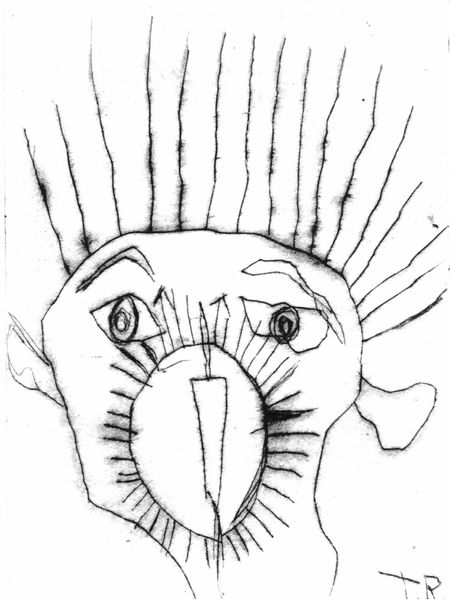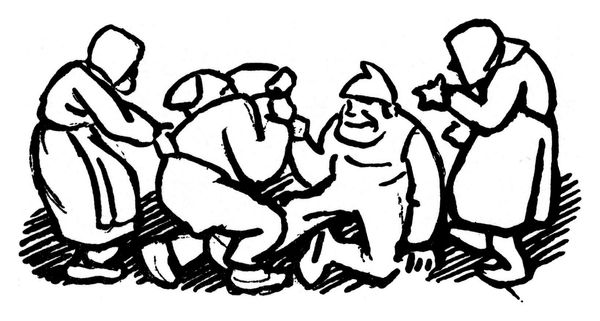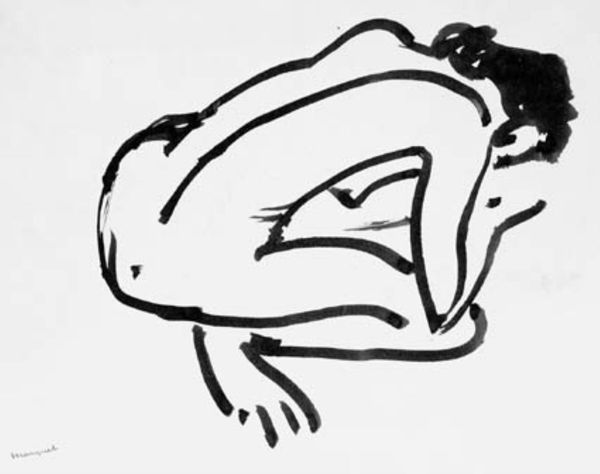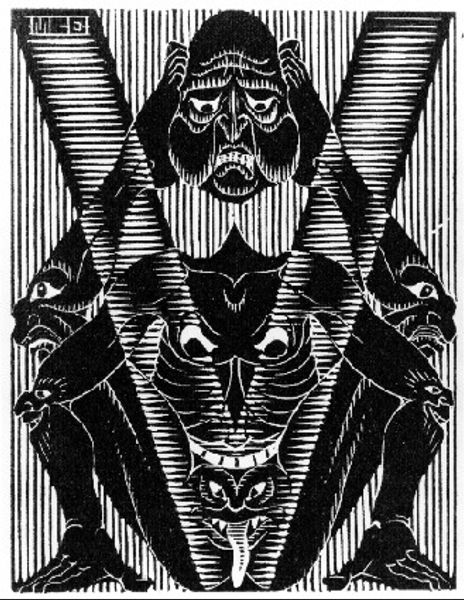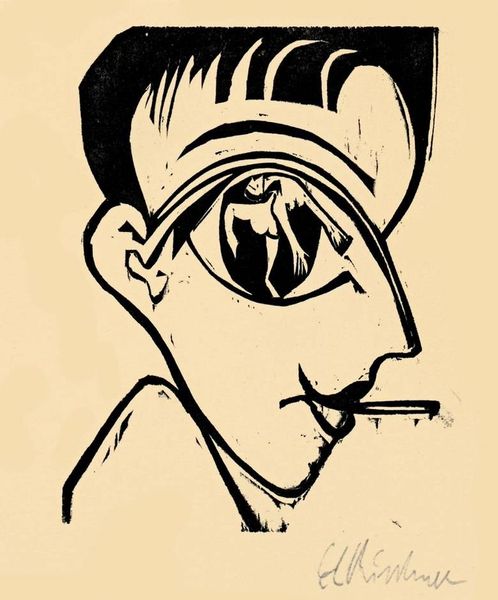
Copyright: Public domain US
Curator: Here we have M.C. Escher's ink drawing, "Perfume," created in 1921. Editor: Wow, the stark contrast between the black and white creates such a bold, almost confrontational image. The stylized face fills the entire frame, amplifying that sense of immediacy. Curator: It's intriguing, isn't it? Escher made this early in his career. Knowing what we know about his later obsession with tessellations and mathematical precision, this raw expression feels almost rebellious. I can’t help reading into the historical and political environment of the early 1920s, following World War I. A kind of cultural trauma seems reflected here. Editor: Perhaps. For me, it’s more about the formal qualities. See how the lines themselves seem to dictate the form? They’re almost calligraphic in their precision, yet they define this very fluid and somewhat grotesque human form. There’s a deliberate simplification at play, stripping the face down to its essential components. Curator: Simplified, yes, but consider what’s emphasized. Look at the exaggerated eye, wide and seemingly judgmental. And what about the almost predatory curve of the nose? This isn't just about aesthetic simplification. The artist seems to use that choice to say something about the human condition. Is this image communicating the insidious ways that institutions and politics “shape” the self? Editor: Perhaps it is Escher's commentary on the self and social environments, but his use of negative space really amplifies the expressive power here. Each curved line builds tension; even the gaps create these uncanny shapes that bring movement. Curator: Absolutely, and it makes you wonder: what perfume is being alluded to here? The drawing makes me think about gender dynamics, and, what if, it comments on the intoxicating, suffocating constraints placed upon individuals at that time. Editor: Well, it has given me much to reflect on! It seems that despite the lack of detail, "Perfume" has great emotional potency due to that masterful arrangement of lines. Curator: And seeing it this way helps understand the powerful intersections between art, history, and lived experience, making even more evocative today.
Comments
No comments
Be the first to comment and join the conversation on the ultimate creative platform.
